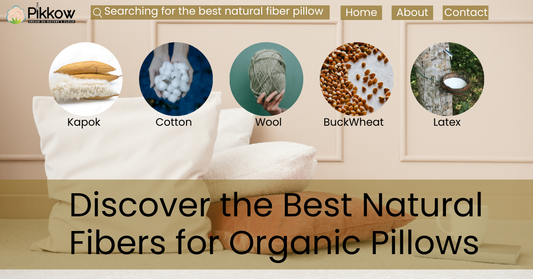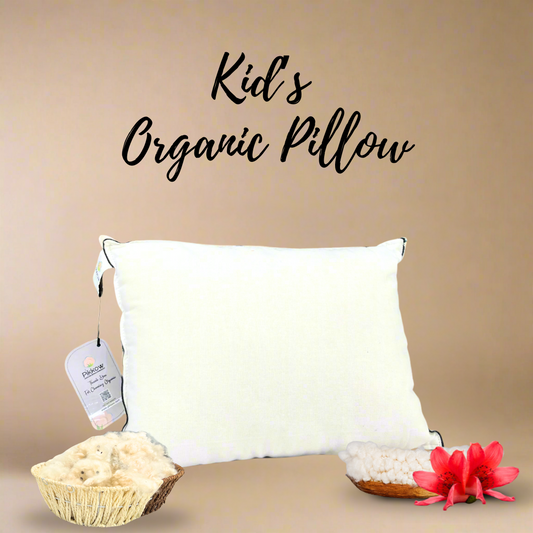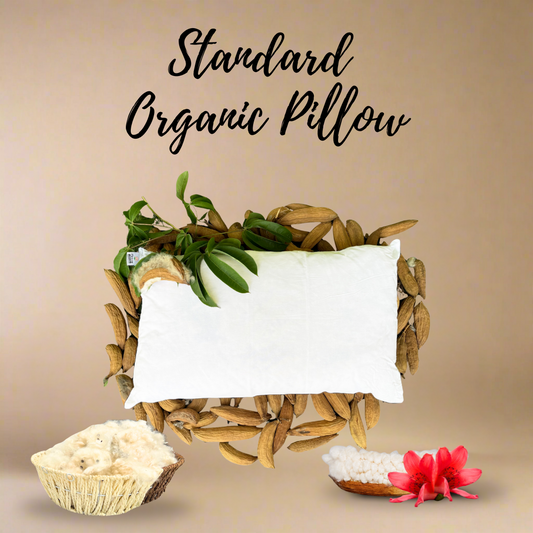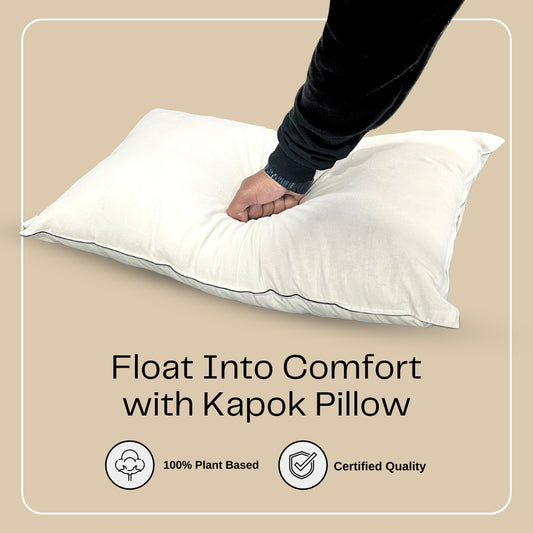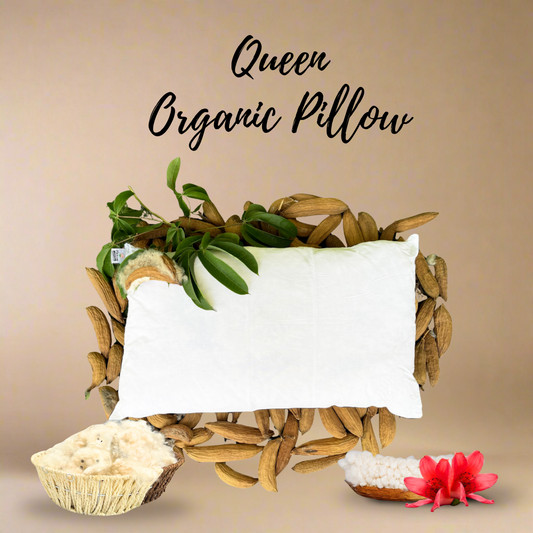Mold and mildew are silent intruders that can compromise the quality of your sleep and your health. In humid climates or poorly ventilated spaces, your pillows may become breeding grounds for allergens. But are natural pillows mold resistant? And how do they compare to synthetic options? If you’re striving for cleaner, more breathable bedding, understanding mold resistant bedding options like organic pillows is essential.
Understanding Mold Resistance in Natural Pillow
Natural pillows are made using materials derived from nature, without synthetic chemicals or fillers. Common types include:
- Natural Latex
- Organic Wool
- Kapok Fiber
- Organic Cotton
These materials offer various health and comfort benefits. But when it comes to moisture and mold, some are far better equipped than others. With more consumers seeking eco-friendly bedding and sustainable sleep products, it becomes vital to evaluate mold resistance as a key deciding factor when choosing your pillow.
Are Natural Pillows Mold Resistant? Here’s the Truth
1. Natural Latex Pillows
Natural latex is one of the top performers in mold resistance. With its naturally antimicrobial properties, it resists mold, mildew, dust mites, and bacteria. These hypoallergenic pillows are perfect for allergy-prone individuals and those seeking a low-maintenance sleep solution. When comparing synthetic vs natural pillows, latex stands out due to its breathable and durable qualities, making it a staple in mold resistant bedding.
2. Organic Wool Pillows
Wool is another excellent mold-resistant option. Thanks to its lanolin coating and superb moisture-wicking capabilities, wool remains dry and discourages mold formation. It’s ideal for pillow mold prevention, especially in humid environments. In addition, wool is naturally dust mite resistant, reducing potential allergic reactions while supporting a healthier sleep.
3. Kapok Pillows
Kapok is a silky, buoyant fiber that naturally resists mold, mildew, and dust mites. It’s an eco-friendly bedding material that is sustainably harvested from kapok trees. Kapok pillow mold resistance makes it a desirable choice for people with allergies and those looking for a plant-based, toxin-free sleep product. Its lightweight and breathable nature enhances airflow and comfort.
4. Organic Cotton Pillows
While organic cotton is not as mold-resistant as latex or wool, it is breathable and free from chemical processing. If kept dry and well-maintained, it offers decent protection against microbial growth. Many users still prefer cotton for its softness and compatibility with breathable pillows, but pairing it with proper care is essential to prevent mold.
Mold Resistance Comparison Table
|
Pillow Type |
Mold Resistance |
Key Benefits |
|
Natural Latex |
Excellent |
Antimicrobial, hypoallergenic |
|
Organic Wool |
Excellent |
Moisture-wicking, lanolin-rich |
|
Kapok |
Very Good |
Eco-friendly, dust mite resistant |
|
Organic Cotton |
Moderate |
Breathable, toxin-free |
Why You Should Switch to Mold Resistant Bedding

If you’re still using synthetic pillows, now is the time to consider the benefits of natural pillows. Here’s why more people are switching:
- Healthier Air Quality: Fewer mold spores and allergens mean easier breathing and better sleep.
- Long-Lasting Comfort: Natural pillows often outlast their synthetic counterparts while maintaining shape and support.
- Eco-Friendly Bedding: Sustainable, biodegradable materials that are better for the planet and safer for your home.
- Hypoallergenic Properties: Safer for allergy sufferers, children, and people with asthma or sensitive skin.
- Pillow Mold Prevention: Natural materials wick moisture away, creating an inhospitable environment for mold growth.
- Dust Mite Resistant Pillows: Reduce allergens, sneezing, and respiratory irritation.
Natural Pillow Care: Preventing Mold the Right Way
Even the best mold resistant bedding needs a little care. Follow these tips for lasting freshness:
- Use breathable pillows with cotton or organic covers.
- Always air out your pillows after use or cleaning.
- Maintain indoor humidity below 50%.
- Avoid placing pillows in dark, damp storage.
- Don’t sleep with wet hair, especially on wool or cotton pillows.
- Wash or spot-clean pillows as per natural pillow care instructions.
Following a pillow maintenance routine is key to maximizing pillow mold prevention, particularly if you're in a region with frequent rainfall or high humidity. Investing in pillow protectors made of breathable fabric can also add an extra layer of safety.
Synthetic vs Natural Pillows: Which Is Safer?

Synthetic pillows often retain moisture, creating the perfect environment for mold and bacteria. They may also release off-gassing chemicals over time, which can aggravate allergies or respiratory conditions. Synthetic vs natural pillows is not just about comfort—it’s a health decision. Natural options like latex, wool, and kapok provide superior ventilation, moisture control, and allergen resistance. Plus, they align better with sustainable sleep products goals.
Conclusion
So, are natural pillows mold resistant? The answer is a confident yes, especially if you choose high-quality materials like latex, wool, and kapok. Combined with proper care, these pillows offer exceptional pillow mold prevention while supporting a cleaner and greener lifestyle. Whether you're battling allergies or simply upgrading to sustainable sleep products, switching to organic pillows is a wise and healthy choice.
Incorporating eco-friendly bedding into your sleep routine means fewer health risks, less exposure to synthetic chemicals, and more peace of mind. Enjoy better rest, fewer allergens, and long-term comfort by switching to mold resistant bedding today.
Make the switch to breathable, dust mite resistant, and mold-fighting natural pillows – and experience a truly healthier sleep.
FAQs About Mold Resistance in Natural Pillows
Q1: Are natural pillows mold resistant in humid climates? Yes, especially those made from natural latex, wool, and kapok. Their breathable and moisture-wicking properties make them ideal for humid environments and a top choice for mold resistant bedding.
Q2: What are the most mold-resistant natural pillow materials? Natural latex and organic wool are considered the most mold-resistant due to their antimicrobial and moisture-controlling properties. They are recommended for users prioritizing pillow mold prevention.
Q3: Can organic cotton pillows develop mold? Yes, if not properly cared for. While breathable, cotton can hold moisture. Regular cleaning and proper ventilation are key to extending the life of organic pillows made with cotton.
Q4: What’s the best way to practice natural pillow care? Use moisture-wicking pillow covers, keep your pillows dry, and store them in well-ventilated spaces. Follow specific care instructions for each material to ensure durability and hygiene.
Q5: Are natural pillows also dust mite resistant? Absolutely. Many natural materials like latex, wool, and kapok are naturally dust mite resistant pillows, making them ideal for allergy-sensitive individuals seeking a hygienic and chemical-free sleep environment.
Q6: How do hypoallergenic pillows support mold resistance? Hypoallergenic pillows are typically made from mold-resistant and breathable materials. These features help prevent the accumulation of allergens and microbial buildup, promoting healthier sleep.
Q7: Are natural pillows worth the investment? Yes. The benefits of natural pillows include improved air quality, better mold protection, longer durability, and sustainability.




